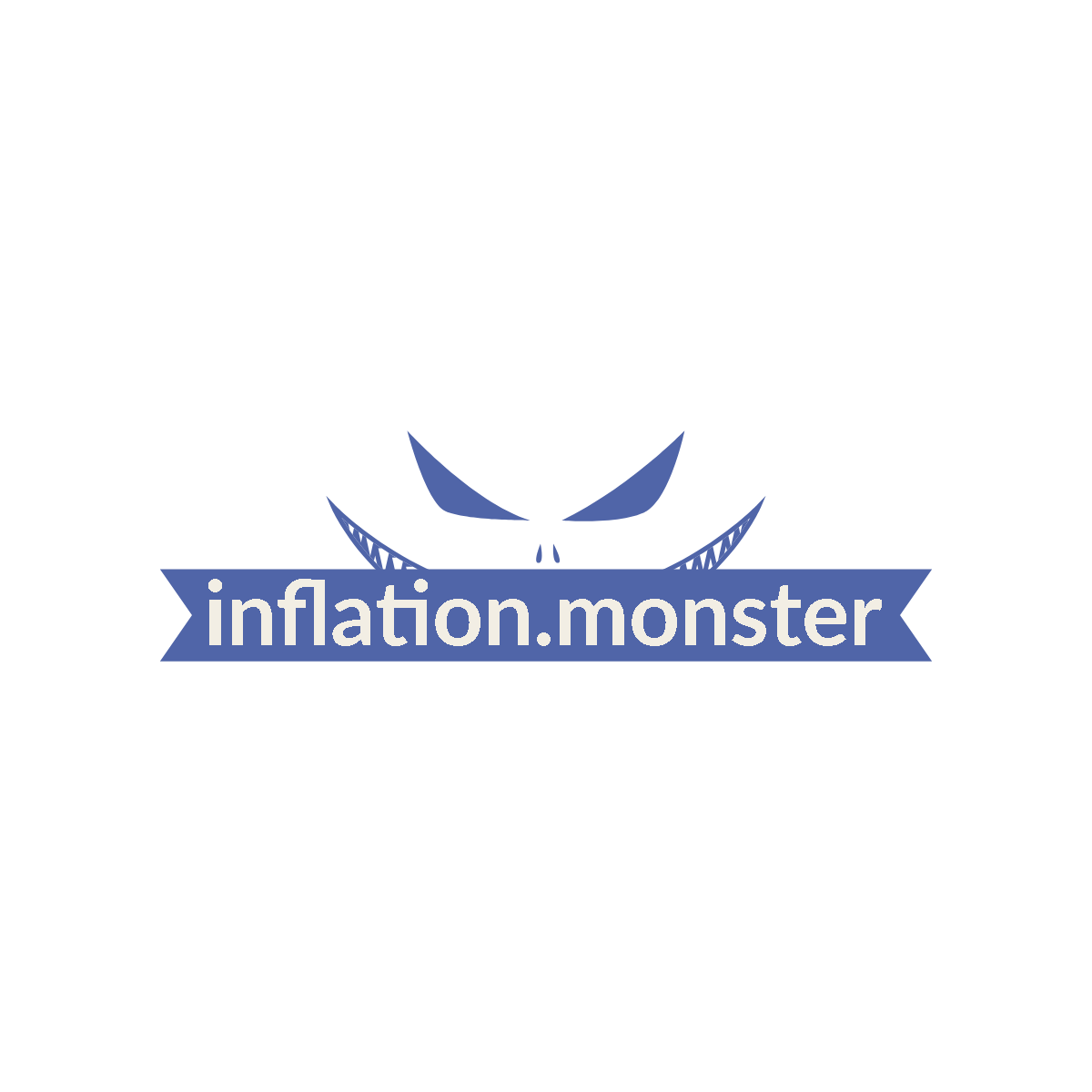Are you curious about the hidden forces that drive the world of money and economics? Look no further, as we, the experts at Inflation.Monster, are here to unravel the mysteries behind the daunting concept of inflation and its impact on our financial landscape. Our focus lies in the fascinating realm of behavioral economics, where human psychology intertwines with monetary policies to shape our economies. Join us on this insightful journey as we dive deep into the world of hard money, inflation, and the powerful monster that controls it all. Get ready to equip yourself with the knowledge needed to navigate the ever-changing world of finance.

Understanding Inflation
Inflation, in simple terms, refers to the general increase in prices of goods and services over time. It is often measured by the Consumer Price Index (CPI), which tracks the average price changes of a basket of commonly consumed goods and services. When inflation occurs, the purchasing power of money decreases, as it can buy fewer goods and services than before. This phenomenon has significant implications for individuals, businesses, and the economy as a whole.
Causes of inflation
Inflation can be caused by various factors, with supply and demand dynamics playing a crucial role. One common cause is excess demand, where aggregate demand outpaces aggregate supply, leading to upward pressure on prices. This type of inflation is known as demand-pull inflation. On the other hand, cost-push inflation occurs when the cost of production, such as wages or raw materials, increases, causing businesses to raise prices to maintain their profit margins.
Types of inflation
Inflation can also be classified based on its intensity and persistence. Mild inflation, also known as creeping inflation, refers to a low and gradual increase in prices over an extended period. Hyperinflation, on the other hand, is an extreme form of inflation characterized by rapid and uncontrollable price increases. This type of inflation often arises due to excessive money supply and can have a devastating impact on the economy.
The Behavioral Economics Perspective
Behavioral economics is a field that combines insights from psychology and economics to understand how individuals make financial decisions. Traditional economic theories assume that people always act rationally, but behavioral economics recognizes that human decision-making is often influenced by psychological biases and emotions.
Introduction to behavioral economics
Behavioral economics challenges the assumption of rationality and explores how people’s decision-making can deviate from what is logically expected. It takes into account factors such as cognitive biases, social norms, and emotions that affect economic choices.
How behavioral economics explains money behavior
From a behavioral economics perspective, individuals’ behavior regarding money is influenced by a range of psychological factors. For example, people tend to have an aversion to inflation as it erodes the value of their money over time. Additionally, individuals may exhibit loss aversion, where they place greater emphasis on potential losses than gains, impacting their financial decisions.
Impact of inflation on money behavior
Inflation has a significant impact on how individuals perceive and handle money. As prices rise, the erosion of purchasing power can lead people to change their consumption patterns. They may cut back on non-essential purchases or seek out cheaper alternatives. Inflation can also affect individuals’ saving and investment behavior, as they may feel compelled to protect their wealth from further loss in value.
Effects of Inflation on Individuals
Inflation can have profound effects on individuals’ financial well-being and overall quality of life.
Purchasing power erosion
One of the most immediate effects of inflation is the erosion of purchasing power. As prices rise, the same amount of money can buy fewer goods and services, reducing individuals’ ability to maintain their standard of living. This can be particularly challenging for those on fixed incomes or with limited financial resources.
Income redistribution
Inflation can also lead to income redistribution within society. Some individuals may experience wage increases that keep pace with inflation, allowing them to maintain their purchasing power. However, others, especially those earning lower wages, may struggle to keep up with rising prices, leading to a widening wealth gap.
Savings and investments
Inflation can impact individuals’ decisions regarding savings and investments. When inflation is high, individuals may feel that traditional savings methods, such as keeping money in a low-interest savings account, are not sufficient to preserve their wealth. They may explore alternative investment opportunities or seek out assets that have historically outperformed inflation, such as real estate or gold.
Inflation and Consumer Behavior
Inflation can influence how consumers perceive prices and make purchasing decisions.
Price perception and purchasing decisions
Inflation can distort individuals’ perception of prices. When prices are rising rapidly, people may become more price-sensitive and actively seek out discounts or sales. On the other hand, if inflation is low, individuals may be less concerned about price increases and more focused on other factors, such as product quality or convenience.
Inflation expectations and consumer confidence
Consumer confidence is closely tied to inflation expectations. If individuals expect prices to rise, they may reduce their spending and postpone major purchases, leading to a decrease in overall consumer demand. Conversely, if individuals expect low or stable inflation, they may be more willing to spend and contribute to economic growth.
Rationality vs. behavioral biases
Traditional economic theories assume that individuals always act rationally and make decisions that maximize their utility. However, behavioral economics acknowledges the presence of cognitive biases that can influence consumer behavior. Individuals may engage in mental accounting, where they categorize money differently based on its source or purpose, leading to suboptimal financial decisions.

Inflation’s Impact on Businesses
Inflation can have significant implications for businesses, affecting their operations, planning, and decision-making processes.
Cost-push inflation and supply-side shocks
When businesses face higher costs of production, such as increased raw material prices or wages, they may pass on these costs to consumers by raising prices. This can impact profit margins and require businesses to adjust their pricing strategies or find cost-saving measures.
Demand-pull inflation and consumer spending
Rapid increases in consumer demand can lead to demand-pull inflation, which can present both opportunities and challenges for businesses. On one hand, businesses can experience increased sales and revenue. However, they may also face supply shortages or increased competition, leading to higher costs and potential difficulties in meeting customer demand.
Inflation’s effects on business planning and decision-making
Inflation can introduce uncertainty and volatility into business planning and decision-making processes. Businesses may need to adjust their budgeting, forecasting, and pricing models to account for potential future price increases. They may also need to consider the impact of inflation on their customers’ purchasing power and adjust their marketing and sales strategies accordingly.
Government Policies and Inflation
Governments play a key role in managing inflation through various policy measures.
Monetary policy and inflation
Central banks are responsible for implementing monetary policy to maintain price stability. They achieve this through actions like adjusting interest rates, managing money supply, and controlling inflation expectations. Central banks aim to strike a balance between controlling inflation and promoting economic growth.
Fiscal policy and inflationary pressures
Government fiscal policies, such as taxation and government spending, can influence inflationary pressures. When governments engage in deficit spending, it can increase the money supply and potentially contribute to inflation. Conversely, fiscal policies that aim to reduce government borrowing and debt levels can help curb inflationary pressures.
Central bank interventions
Central banks may intervene in the foreign exchange market to manage inflation. By buying or selling foreign currencies, central banks can influence exchange rates, which, in turn, can impact import prices and inflation levels. These interventions often aim to maintain price stability and ensure the competitiveness of domestic industries.

Psychological Factors in Inflation
Psychological factors play a significant role in individuals’ perception and understanding of inflation.
Inflation aversion and loss aversion
Many individuals have an aversion to inflation due to the perceived erosion of purchasing power. Inflation can create uncertainty and anxiety about the future, leading individuals to exhibit risk aversion and adopt conservative financial strategies. Loss aversion, where the pain of losing is greater than the joy of gaining, can also influence individuals’ reactions to inflation and their financial decision-making.
Anchoring and framing effects
Psychological phenomena such as anchoring and framing effects can impact individuals’ perceptions of inflation. Anchoring occurs when individuals rely heavily on a specific reference point, such as past prices, in evaluating the current price level. Framing refers to how information is presented, which can influence individuals’ judgments and decisions. These effects can shape how individuals perceive and react to inflation.
Cognitive biases influencing inflation perception
Cognitive biases, such as the availability heuristic or representativeness bias, can impact individuals’ perception of inflation. The availability heuristic occurs when individuals base their judgments on readily available examples or information, which may not accurately reflect the overall inflation rate. Representativeness bias involves individuals making judgments based on stereotypes or generalizations, leading to errors in assessing inflation.
Inflation Expectations and Monetary Policy
Expectations about future inflation rates can influence individuals’ behavior and economic outcomes.
Adaptive expectations theory
Adaptive expectations theory suggests that individuals form their expectations based on past inflation rates. This theory assumes that people adjust their expectations slowly, often underestimating or overestimating future inflation based on recent experiences. These expectations can then impact wage negotiations, price-setting decisions, and overall economic stability.
Rational expectations theory
Rational expectations theory posits that individuals form expectations based on all available information, including their understanding of how policymakers may respond to inflation. This theory assumes that individuals are rational and make optimal decisions based on their understanding of economic fundamentals. Rational expectations can influence wage negotiations, investment decisions, and the effectiveness of monetary policy.
Effects of managing inflation expectations
Central banks often aim to manage inflation expectations to achieve price stability. When individuals have low and stable inflation expectations, it can help anchor inflationary pressures and reduce the impact of cost-push or demand-pull inflation. By effectively communicating and implementing monetary policy, central banks can shape and manage inflation expectations to support economic stability.
The Role of Individual Decision-making
Individuals’ financial decision-making plays a crucial role in navigating inflationary environments.
Financial decision-making under inflation
Inflation can introduce complexities and uncertainties into financial decision-making processes. Individuals need to consider factors such as the time value of money, inflation expectations, and potential erosion of purchasing power when making investment, borrowing, or spending choices. Financial literacy and understanding of inflation’s impact on personal finances are essential in making informed decisions.
Behavioral aspects of saving and investment
Inflation can influence individuals’ saving and investment behaviors. In response to inflation, individuals may seek out investment vehicles that can potentially outpace inflation, such as stocks, real estate, or commodities. However, behavioral biases, such as loss aversion or overconfidence, can also impact investment decisions and potentially lead to suboptimal outcomes.
Inflation hedging strategies
To protect against inflation, individuals may adopt inflation hedging strategies. These strategies aim to preserve wealth and mitigate the erosion of purchasing power. They may involve investing in assets that have historically outperformed inflation, such as Treasury Inflation-Protected Securities (TIPS) or inflation-indexed bonds. Individuals may also consider diversifying their investment portfolios or exploring alternative assets to hedge against inflation risk.
Behavioral Economics Interventions
Behavioral economics interventions can help individuals mitigate the impact of inflation and make better financial decisions.
Nudging approaches to combat inflationary bias
Nudging refers to subtle changes in the presentation or choice architecture that can influence individuals’ decisions without restricting their freedom of choice. Behavioral economists can design interventions, such as defaults or prompts, to encourage individuals to make choices that align with their long-term financial well-being, considering the impact of inflation.
Inflation education and financial literacy
Improving financial literacy and providing education about inflation can empower individuals to make informed financial decisions. Educational programs can help individuals understand the concept of inflation, how it affects their money, and strategies to mitigate its impact. By increasing financial literacy, individuals can develop skills and knowledge to navigate inflationary environments more effectively.
Regulatory interventions to mitigate inflation’s impact
Regulatory interventions can play a role in mitigating the impact of inflation on individuals and the economy. For example, governments may implement consumer protection measures to ensure fair pricing practices and prevent price gouging during periods of high inflation. Regulations can also aim to promote price transparency, improving individuals’ ability to compare prices and make informed purchasing decisions.
In conclusion, understanding inflation from a behavioral economics perspective provides insights into the complex relationship between money behavior and the impact of inflation on individuals, businesses, and the economy. It highlights the role of psychological factors, biases, and expectations in shaping decision-making processes. By considering these factors and implementing interventions that address behavioral biases and promote financial literacy, individuals can better navigate the challenges posed by inflation and make more informed financial choices.




